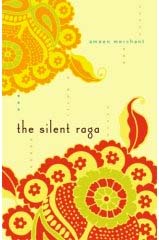Dec 10, 2025
Dec 10, 2025
 A man's rare insight into a woman's plight? A sentence in Ameen Merchant's first book gives away the empathy, which made him delve so deep into women's minds.
A man's rare insight into a woman's plight? A sentence in Ameen Merchant's first book gives away the empathy, which made him delve so deep into women's minds.
Into the world of a woman-child playing hopscotch, a kolam-drawing young woman in a long skirt, a girl-woman taking a sibling to school, a burnt mother, a sister-mother, a second wife-thangame (the little sister), Merchantese for a special relationship, and the worker woman caught in a bind... all kinds of women that make up India.
The classical Carnatic ragas are the chapters in a saga of humiliation and love gone horribly wrong.
It is with breathtaking ease that Merchant gets into a woman's head, like Khaled Hosseini in "A Thousand Splendid Suns", and one often tends to forget that it is Merchant's very first book.
Vancouver-based Merchant was born in Bombay, now called Mumbai, and brought up in Chennai that was earlier called Madras. So, Madras of yore is splashed across the book.
The attempt is, however, not so much to portray the quintessential 'Madrasi' but the 'Tamil Brahmin' now in a new dilemma, groping for an ethos that "he" never really came to terms with.
Reading this book about woman, somehow, one senses that the 'Brahman' or divinity is man.
Liberal use of Tamil words gives the book its ethnic flavour. The reader can easily recognise Sripuram - which could be Kancheepuram or Tiruchirapally in Tamil Nadu.
The 'agraharam' or Brahmin residential area close to the temple could be the one just behind the Armenian Street in Chennai or next to the famous Sriranganathan temple, dawn could be like the opening of the lotus day after day and curiosity could be as killing in Karol Bagh in Delhi or Matunga in Mumbai.
The timeframe the novel is set in is a little skewered though, as if Rip Van Winkle woke up a few decades earlier than he was meant to. Two sisters, the protagonists are placed in the late '60s to early '90s, a span of about 30 years.
That was the time that the loud question in the book, "Where do middle-class, Tamil Brahmin girls go when they turn eighteen?" was really answered by the so-called Tam-Brahm women.
Surely, the stories of the pre-18 lives of all the Vyjayantimalas, Hema Malinis and Sridevis would make compelling reads. During heydays of MGR, Jayalalitha and Sivaji Ganesan, we know where these women went; we may not know yet the whys.
More real are the thousands of Tam-Brahm women office-goers filling the corridors of the South Block and Shastri Bhavan in Delhi and the Mumbai Corporation as well as schools, colleges and hospitals.
The '70s and the '80s were the growing up times for the "Maamis" who drove scooters and today cars, living between New York and New Delhi.
In real life, this emancipation of the middle-class Tam-Brahm woman could not have happened as it did if the thinking in the community was so dead-ended in these decades as Merchant portrays it to be.
In that sense, the reader, especially one in Tamil Nadu, will feel a little disconnected even while he or she recognises the raga in the hum of literary merit.
07-Apr-2008
More by : Papri Sri Raman